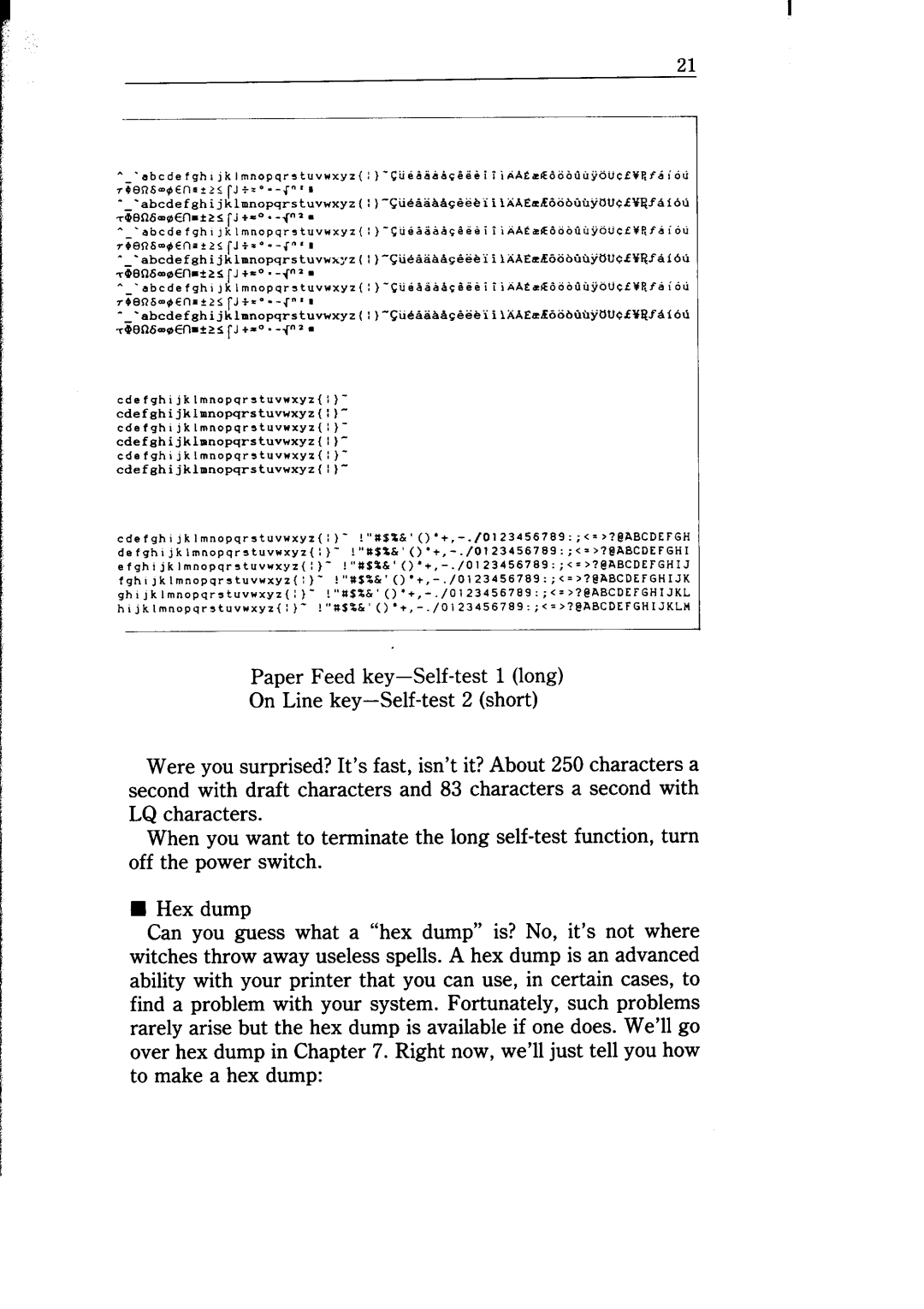
cdefghijklmnopqrstuvwxyz(~)- |
|
|
|
|
cdefghijklmnopqrstuvwxyz( |
| I)- |
|
|
cdefghlJklmnopqr~tuvwxyz(~)- |
|
|
|
|
cdefghijklmnopqrstuvwxyz(: |
| )- |
|
|
cdafghljklmnopqr~tuvwxyl(l)- |
|
|
|
|
cdefghijklmnopqrstuvHxyz(l)- |
|
|
|
|
cdefghlJklmnopqrrtuvwxyz(~)- |
| !“tl$Xh | ||
dafghljklmnopqr~tuvwxyz(~}- |
| !“lLSt&’ | ( | |
efgh!jklmnopqr¶tuvwxyz(~)- |
| !“?lSS&‘() | ||
fgh~Jklmnopqrstuvwxy2(:)- |
| !“#S%&‘O’ |
| |
gh~Jklmnopqrstuvwxyz(: | 1‘ | !“a$%&’ | () | |
hlJklmnopqr~tuVWxyz{:)-!”
Paper Feed
On Line
Were you surprised? It’s fast, isn’t it? About 250 characters a second with draft characters and 83 characters a second with LQ characters.
When you want to terminate the long
nHex dump
Can you guess what a “hex dump” is? No, it’s not where witches throw away useless spells. A hex dump is an advanced ability with your printer that you can use, in certain cases, to find a problem with your system. Fortunately, such problems rarely arise but the hex dump is available if one does. We’ll go over hex dump in Chapter 7. Right now, we’ll just tell you how to make a hex dump:
